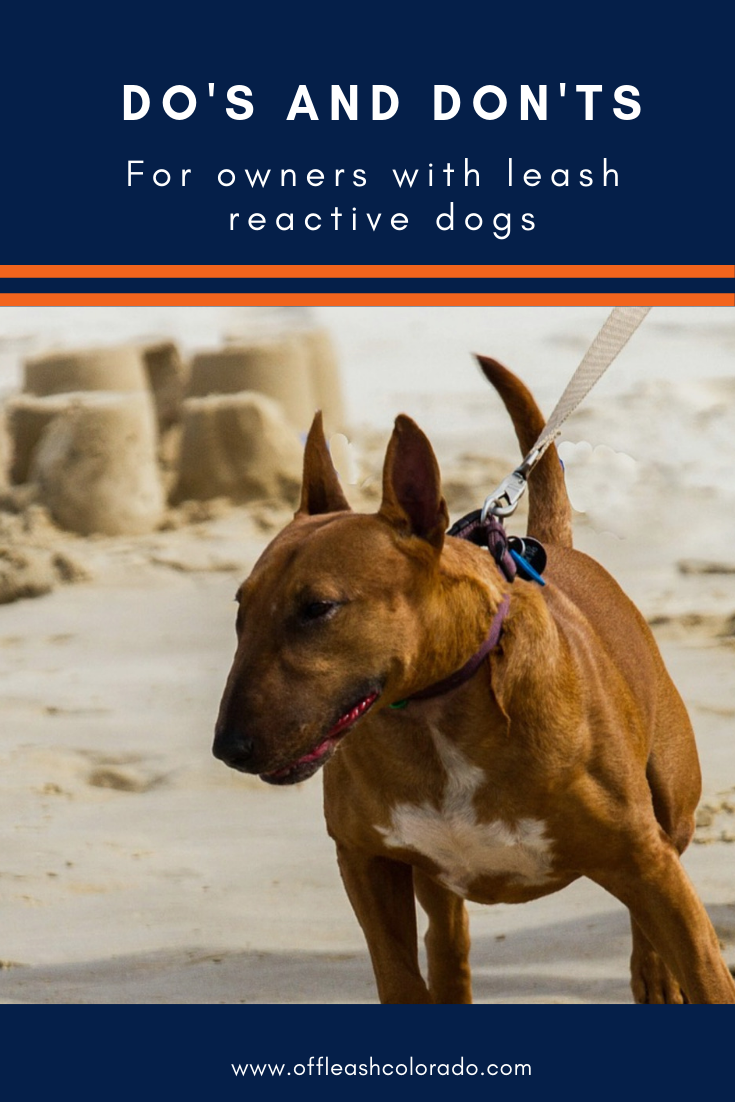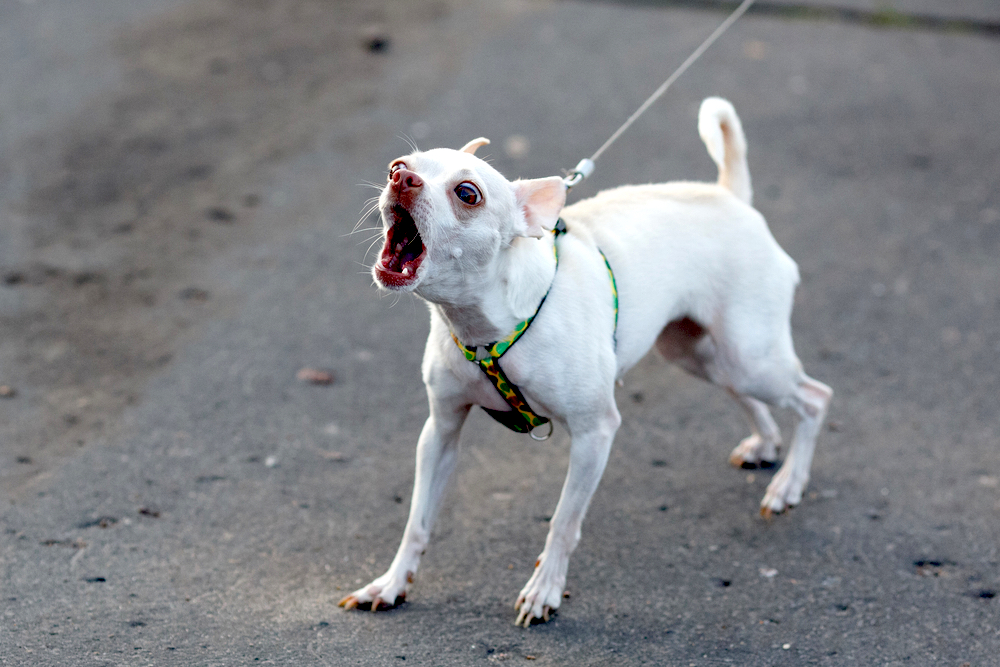

Yawning is a signal that everything is OK. You can yawn too, which will help your dog feel more relaxed. The key is showing your dog that you are making the decisions on the walk, you are leading them and keeping them safe. You want to be able to get your dog’s attention regardless of what’s going on around you. This practice will make it easier for your dog to remember what to do when they are feeling anxious. Practice walking off the path and asking your dog to “wait” when no one is approaching. Get your pup’s attention and ask them to “Wait” as the dog passes, giving them a high-value treat and praise. Stand in between your dog and the other dog passing to show your dog you are protecting them.

This is easy to do if you take them on walks in places that allow you to easily get off the trail, with plenty of space to allow for a wide buffer as other dogs pass. In these cases, avoiding other dogs, or giving space at first, is still the best tactic. Many dogs can learn, over time, to trust you enough to help them when they feel afraid. If your dog looks to you as their leader, you are well on your way to decreasing reactivity to other dogs. Obviously, the approach taken to address their behavior has a huge impact on how they heal from the trauma. They were traumatized and are now exhibiting fear, the only way they can express their emotions.Ī dog’s ability to recover from the trauma and change their reaction depends on their personality, history, and how they deal with stress. These dogs are often unfairly labeled “aggressive.” These sensitive souls are judged for their natural, fearful reaction, which so often leads to them being abandoned, returned to a rescue organization, or euthanized. Some dogs can feel comfortable around other dogs within a few months, while others may be afraid of all dogs, or those of a certain breed, size, sex, or color for the rest of their life.

No matter the dog’s experience of being attacked, just be aware their fear-reaction is coming from a very real place. Why some dogs are reactive A dog may be reactive to other dogs because they’ve had bad experiences in the pastįor some extra sensitive dogs, they may not have even been attacked but may have witnessed another dog being attacked, and this experience alone was enough to cause them to feel afraid and insecure with other dogs. This is their natural response but can be difficult for whoever is walking them and can cause the approaching dog to increase their reaction. These include barking, lunging, or growling - anything to make the threat go away. Most dogs don’t want to fight, so they display several behaviors designed to prevent it. Their forced body language can put dogs in a mindset that they have no option but to fight. Also, on a leash, the dogs are forced to approach head-on and are often unable to turn their bodies. When on a leash, dogs can’t choose to flee, which can be stressful and overwhelming.


 0 kommentar(er)
0 kommentar(er)
